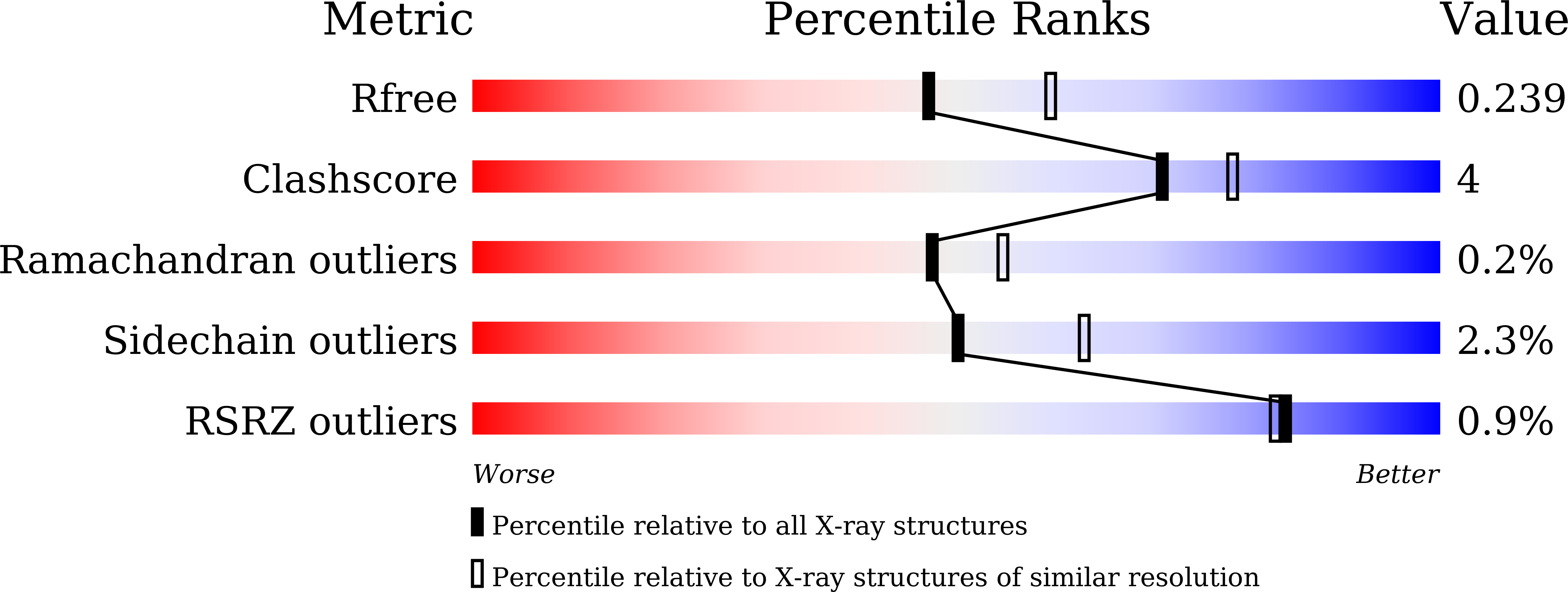Structural and mutational studies of an electron transfer complex of maize sulfite reductase and ferredoxin.
Kim, J.Y., Nakayama, M., Toyota, H., Kurisu, G., Hase, T.(2016) J Biochem 160: 101-109
- PubMed: 26920048
- DOI: https://doi.org/10.1093/jb/mvw016
- Primary Citation of Related Structures:
5H8V, 5H8Y, 5H92 - PubMed Abstract:
The structure of the complex of maize sulfite reductase (SiR) and ferredoxin (Fd) has been determined by X-ray crystallography. Co-crystals of the two proteins prepared under different conditions were subjected to the diffraction analysis and three possible structures of the complex were solved. Although topological relationship of SiR and Fd varied in each of the structures, two characteristics common to all structures were found in the pattern of protein-protein interactions and positional arrangements of redox centres; (i) a few negative residues of Fd contact with a narrow area of SiR with positive electrostatic surface potential and (ii) [2Fe-2S] cluster of Fd and [4Fe-4S] cluster of SiR are in a close proximity with the shortest distance around 12 Å. Mutational analysis of a total of seven basic residues of SiR distributed widely at the interface of the complex showed their importance for supporting an efficient Fd-dependent activity and a strong physical binding to Fd. These combined results suggest that the productive electron transfer complex of SiR and Fd could be formed through multiple processes of the electrostatic intermolecular interaction and this implication is discussed in terms of the multi-functionality of Fd in various redox metabolisms.
Organizational Affiliation:
Division of Protein Chemistry and.


















